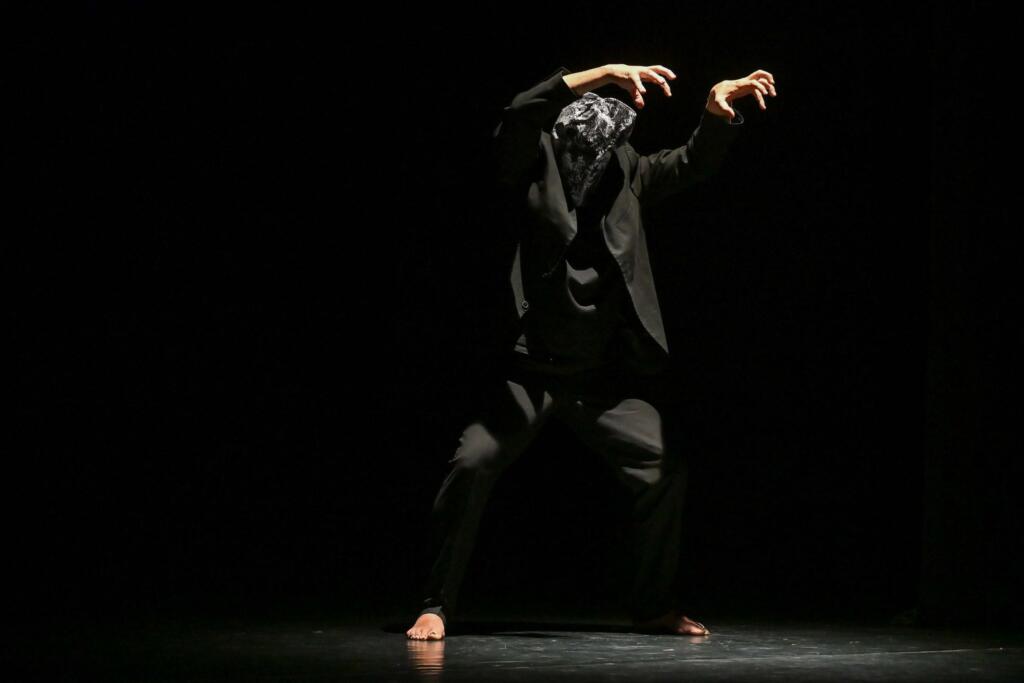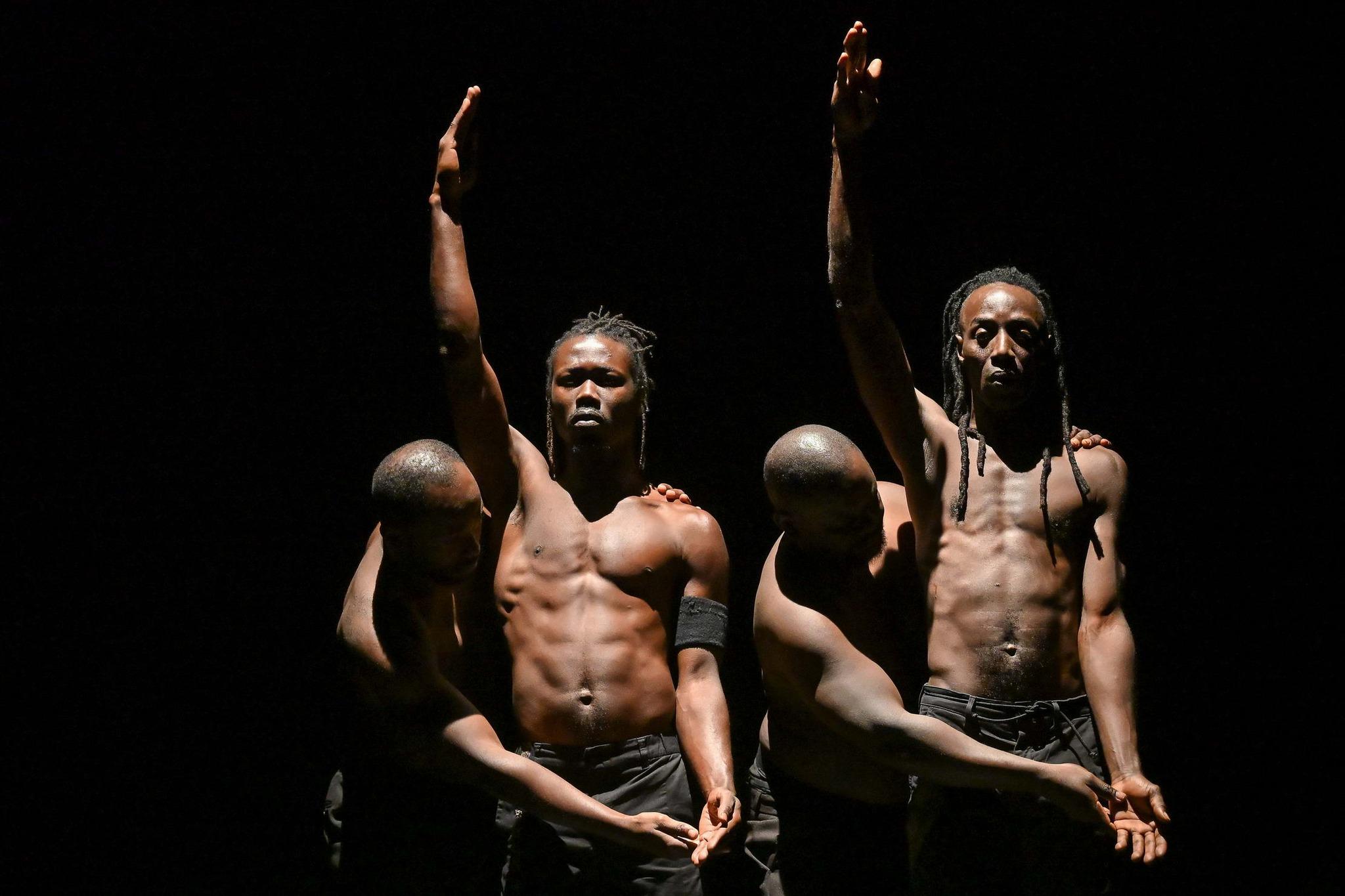“By the term theatre we do not only mean its expressive linguistic side, but also the cultural, social, and organisational aspect of the phenomenon… among many people, theatrical plays, in which the whole community participates, are held at the change of seasons. This connection undoubtedly takes on the meaning of ritual and sacrifice, for the performance, which is to celebrate the renewal of the cycle upon which the survival of the entire community depends.” (Cesare Molinari: Theatre Through the Ages)
With these words of Molinari about the origins of theatre, one can open the review of the play Full Moon by the incredible dancer, in this case also a talented choreographer and skilful director, Josef Nadj, which was performed in September 2025 at the FIAT (Festival of International Alternative Theatre) in Podgorica (Montenegro). Lunar calendar and theatrical repertoire. The play was performed only two days before a total lunar eclipse. In ancient times, this phenomenon was interpreted as a cosmic conflict in which a deity “swallowed” the Moon; therefore, rituals full of sounds, shouting, dancing, and gazing at the sky were performed to drive away the force and bring the Moon back. The Moon is, in many traditions, associated with the unconscious worlds within humans and the human spirit, with collective emotions, unwavering instincts, and eternal cycles. That is why nonverbal dance art recognises it best. In today’s spiritual practice, an eclipse is seen as a time when our inner light is overshadowed, leading to a confrontation with what we usually hide. This celestial phenomenon always occurs during the full Moon, which is a symbol of culmination, realisation of manifestations, and the closing of a period. It is the moment when something is completed or fulfilled. Throughout history, eclipses have often signalled a change in humanity’s destiny. The sky speaks, or better said, it dances. This coincidence is not accidental. It is as if nature itself left a trace and a beat in the rhythm of the stage, in the cycle of the dance, in the ritual character of the overall concept of theatre and its manifestations.
The stage is minimalist and stripped-down, illuminated by the cosmic glow of a single spotlight. In the background, a black void conceals Nadj, the guide of the dance, while the walls are shrouded in darkness. That single spotlight hanging above the dancers and the dance, in this dramaturgy, becomes the Moon, a signpost from above and the centre of gravity of the entire performance, of the complete planet. Through the dance on stage, the renewal of cycles takes place, where the eternal rhythm of transition from darkness to light, from death to birth, is realised through the tension of the body into the liberation of movement. The emptiness of the stage space allows even the smallest gesture to gain immense and powerful meaning. Dance in Nadj’s direction and choreography becomes a self-sufficient articulation.
The movements are sharp, cutting the air like a blade that separates the false from the true. In the dancers’ hands, that blade also becomes a feather. A feather of a bird flying through the clouds of illusion, or the feather of a writer of a song or a story, a dance narrator who designs the trajectory of flight. A dance that is at once deadly and gentle, destructive and healing, allowing each spectator to understand it differently, as their own soul dictates.
Suddenly, the body relaxes, the rhythm changes, collective release begins, on stage and in the audience. Seven dancers (Timothé Ballo, Abdel Kader Diop, Aipeur Foundou, Bi Jean Ronsard Irié, Jean-Paul Mehansio, Sombewendin Marius Sawadogo and Boukson Séré), with the movements of their bodies, construct choreographies that are never entirely closed, for each time one dancer disrupts the synchronisation, breaks the collective pattern, and with their own style of dance, tempo, and character, opens a crack for authenticity. This unusual rupture of harmony is the dramaturgical accent through which magic arises. The performance constantly moves between the polarities of light and darkness, tradition and contemporaneity, ritual spectacle and theatrical performance. In its duality, fullness and power are revealed.
In Full Moon, collective memory is unfolded. Every artistic gesture evokes layers of past civilisations, rituals, and ceremonies, while reshaping them into a contemporary dance language. The body disintegrates and reassembles, loses form and finds it again. The cosmic balance within the performance does not seek explanation, but leaves the body to survive, to rise, and to reorient itself anew.
Dance here is not narrative, not a story, but a return to the primordial beginning: the rhythmic beat of time in the feet and the heartbeat in the chest. The breath that emerges from the body begins to resemble the ebb and flow of the tide. Each dance sequence questions the alternation of day and night, seasons and changes. Past, present, and future are not linear occasions here; they are “rings on the trunk of a fallen tree,” as Molinari says, and in the dance (ritual) theatre, they are always present simultaneously.
Josef Nadj is both a choreographer and a guide, a figure akin to the shaman of the ancient performances described in the earliest histories of theatre. His role is not to explain, but to invoke. With hand, feather, and mask, he opens a space in which the spectator can experience their own version of ritual. He appears as a dance-like Alejandro Jodorowsky, who, through film and theatre, seeks a path to sacred truth, through psychoanalysis and autosuggestive rituals. And Nadj too, through movement, mask, and theatrical darkness, draws threads not from history, but from recurring time. His dance dramaturgy is psychomagic, therapy, and revelation. Nadj prophesies.

The play Full Moon: Atelier 3+1 (France), directed by Josef Nadj. Performed at the Festival of International Alternative Theatre (FIAT) in Podgorica (Montenegro). Photo credits: Edvard Molnar
A special place is taken by the mask, as both the face and the reverse of man, a means of revealing and concealing, a weapon of power. In primal performances, masks embodied the Sun, the Moon, and the deities. In ecstasy, the shaman identified with the divine by placing the mask on his face, so that the gods would recognise him. At first, only Nadj wears a mask. By the end of the performance, all the performers are masked, for all have approached and identified with the divine.
Masks are not decoration, but spirit/spirits. The dancers in trance, mediums. Their movements become transmitters of energy and collective memories, and their projections on stage become visible, revealed through dance. Through the art of dance, invocation and prophecy take place. “Spirits” are released, not fantastical ones, but those dwelling within people: their emotions, traumas, archetypes.
Nadj establishes confrontations spanning forgotten times, past civilisations, and contemporary as well as future artistic currents. The dancers soil their hands with imaginary earth, then purify them with imaginary water. Earth, water, air, fire – this performance, by uniting and permeating them, becomes an ethereal quintessence. The bodies of the dance ensemble become space for examining the physical, psychic, and emotional movements of the world, of life, of each of us, in the present as in the past and the future, in eternity.
Full Moon is a pantomime of sparse movements, an imitation of voices, and mimicry that says more than speech. Josef Nadj’s performance breaks through the boundary of magic and enters the realm of the energy of concrete, immediate life. Each movement is birth and death, giving and receiving, a living energy that endlessly circulates and changes form.
This is not a play in the classical sense, but a ritual for fertile, abundant art. It is also an experience in which the audience participates alongside the dancers, a confrontation with the cycles of life, with masks and faces, with the weight of past and present civilisations. Josef Nadj proves that dance is still the most complete form of knowledge, for in it the body speaks of what is older than language and stronger than words, what comes to light when our inner light is eclipsed. Full Moon does not ask the spectator for interpretation, but for presence.
Full Moon confirms that the history of theatre and the history of civilisation unfold along a single line, from the primordial beginnings to the present. All the “rings” of human development are present in this performance: ritual, mask, ceremony, as well as contemporary dance expression, jazz music, fragmentation, repetition, and minimalist stage. The author constructs a cosmic dramaturgy, the pulse of time, the reflection of the Moon’s phases, the rotations around its own axis and the Sun’s. The dance performance suggests the turns of fate and, at the same time, its invocation and release. The performers celebrate the celebration itself, that life which breaks forth from the body and gives birth to a new thirst for art. The festivity spills over onto all of us.
This post was written by the author in their personal capacity.The opinions expressed in this article are the author’s own and do not reflect the view of The Theatre Times, their staff or collaborators.
This post was written by Emilija Kvočka.
The views expressed here belong to the author and do not necessarily reflect our views and opinions.


